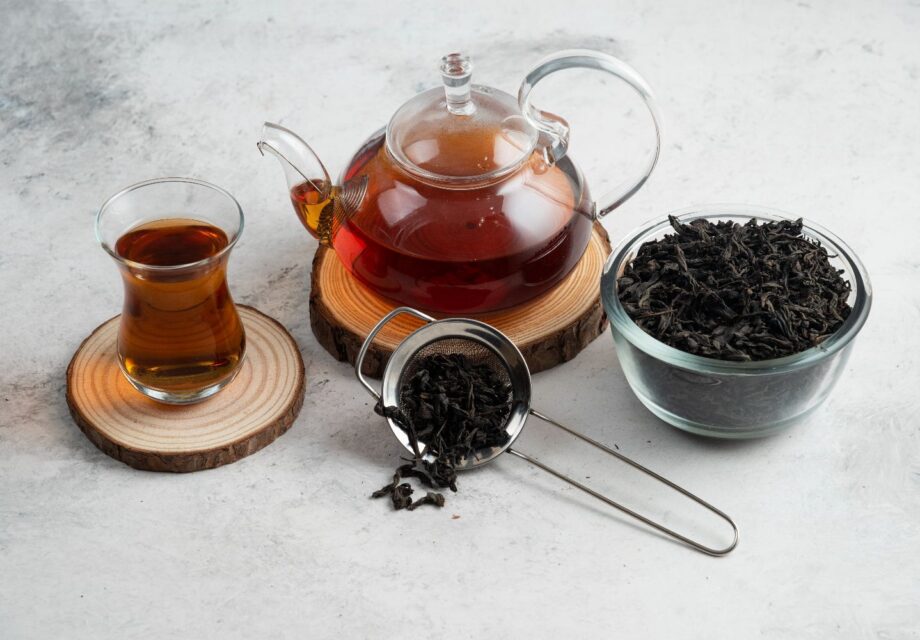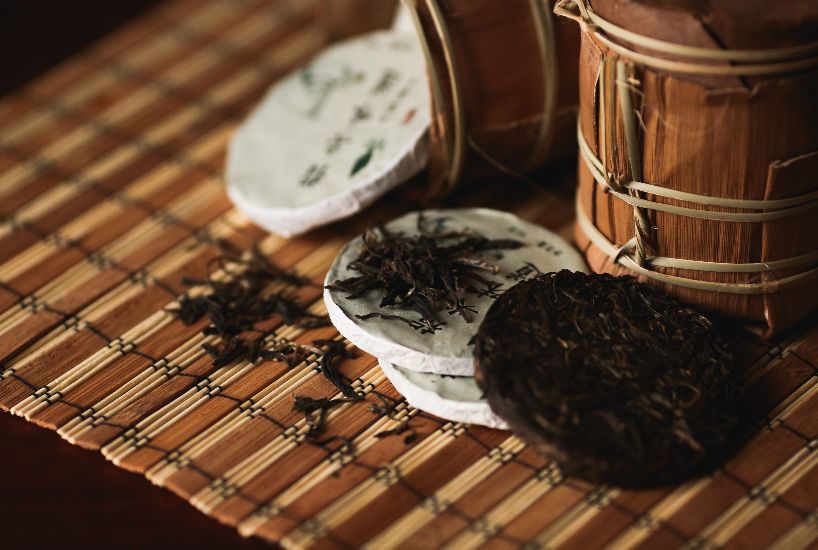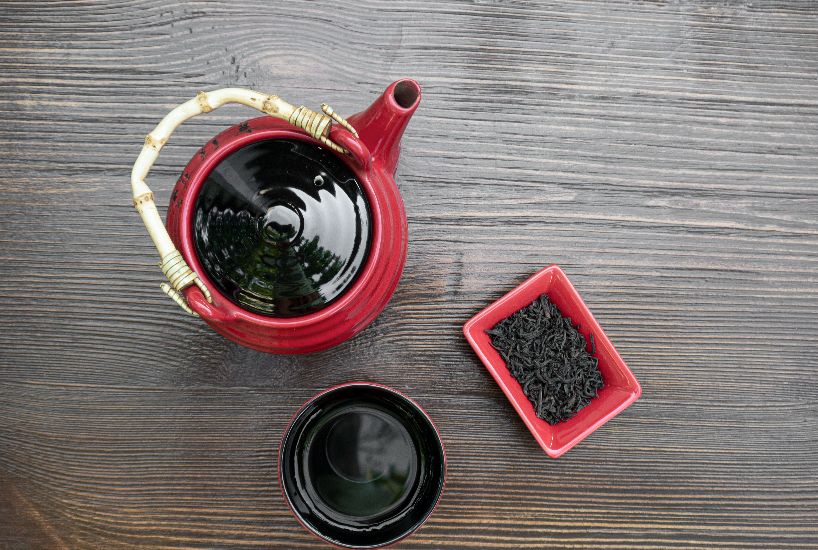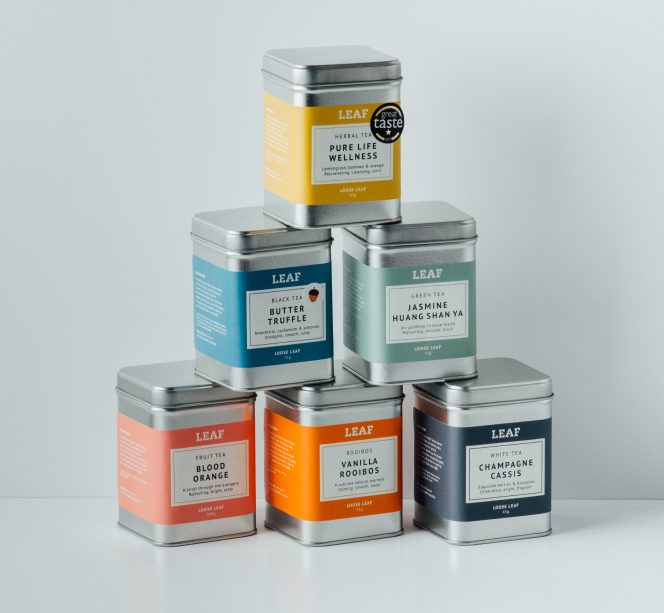
At Leaf, we are big fans of experimenting with flavours and uncovering the power that delicious, fragrant teas can have. In the West, we have all fallen into the pattern of enjoying a limited selection of teas.
It can be easy to stick to what you know, with many British people only enjoying a limited range of tea flavours. Sometimes, we branch out and experience huge explosions of trends when people discover delicious teas, with Matcha tea skyrocketing in popularity in recent years.
An unsung hero who deserves more attention at Leaf is Pu-erh tea. Many people have never heard of this aged tea, let alone tried it, so this delicious Pu-erh has continued to go unnoticed, but at Leaf, we are ready to change that.
In this guide, we will provide more insight into Pu-erh tea and how introducing this unique loose-leaf tea to your life can make a huge difference.

What is Pu-erh Tea?
Pu-erh is a distinctive fermented tea from China’s Yunnan Province, famous for its rich, earthy taste and ability to age over time. It is produced from the large-leaf variety of the Camellia sinensis tea plant and is different from other teas because it undergoes a microbial post-fermentation process that can last several years.
The tea is most commonly found in two forms, Sheng (raw) and Shou (ripe) Pu-erh.
Sheng Pu-erh
Sheng Pu-erh, also known as raw Pu-erh, is aged over years or even decades through a slow and meticulous process of natural oxidation and fermentation. It develops a deeper, darker hue and a more complex flavour as it ages, making it an incredibly delicious drink.
Shou Pu-erh
Shou Pu-erh, also known as ripe Pu-erh, represents a modern approach to traditional Pu-erh tea. It involves wet-piling or dampening techniques to accelerate fermentation, resulting in darker, earthier infusions with a rich and smooth taste.
Due to its speed, this process is quickly growing in popularity.
The History of Pu-erh Tea
You all know that at Leaf, we love exploring the history of our teas and uncovering how they have grown in popularity. Pu-erh tea, often referred to as Cha Pu-erh tea, has a rich and complex history.
Originating from Yunnan, China, Pu-erh tea grew in popularity during the Tang, Ming and Qing dynasties, and was famously traded to secure crucial goods for survival.
Pu-erh tea is known for its compressed, cake-like form, which is why it is preserved during long journeys. Through transportation for trade, Chinese tea merchants developed the practice of ageing the tea, improving the fermentation process with practice.
Pu-erh tea is still used in traditional Chinese medicine today. It is believed to aid digestion and provide the body with essential nutrients.
It wasn’t until the early 2000s that we saw a boom in people using it in delicious loose-leaf blends. Its appreciation grew as tea enthusiasts became more aware of its health benefits and grew to love its complex, full-bodied flavor.

Properties of Pu-erh Tea
At Leaf, we believe it is important to understand the properties of teas before you use them to see if they match your needs and tastes. Pu-erh tea has some fantastic properties, making it a tea to look out for.
Naturally Fermented
Because Pu-erh tea undergoes a natural fermentation process, it produces bioactive compounds that boost gut health and introduce beneficial microorganisms that help promote a diverse gut microbiome, improving overall gut health.
Rich in Antioxidants
The fermentation process also helps to create high levels of antioxidants in the tea.
Pu-erh tea is packed with powerful antioxidants, including theaflavins, gallic acid, epicatechin, and flavonoids. These compounds, along with vitamin C and polyphenols, help support gut health, protect against oxidative stress, and have anti-ageing effects.
Contains Caffeine
When you enjoy a cup of Pu-erh tea, you can expect to have 30-100mg of caffeine per cup. This caffeine content means it has significantly less caffeine than your standard cup of coffee, all while still delivering a steady energy boost that enters your system gradually, meaning that you won’t experience the same jitters you might experience from a cup of coffee.
Unique Ageing Process
Pu-erh tea’s distinctive ageing process is a form of post-fermentation, involving microbial activity that happens after the leaves are dried and rolled. This process, which may last months or years, allows the tea to develop its characteristic deep, earthy flavour, setting it apart from other teas that are typically enjoyed fresh.
This unique process gives the aged tea its distinctive, rich flavour and positions it as a loose-leaf tea packed with benefits.
Health Benefits of Pu-erh Tea
As well as being incredibly delicious, Pu-erh tea has a whole host of benefits, making it a fantastic choice for leading a healthier lifestyle with herbal tea. Some of the benefits of Pu-erh tea include:
Supports Digestion
In China, Pu-erh tea is often enjoyed after a large meal as it has been known to support digestion and aid a fast metabolism. The beneficial probiotics created by the tea help to reduce issues such as bloating and gas, making it a great tool for supporting the digestive system and promoting healthy gut bacteria.

Boosts Energy
Pu-erh tea increases your energy by delivering a moderate amount of caffeine, which activates the central nervous system to improve alertness and concentration. Unlike coffee, Pu-erh tea’s blend of caffeine and L-theanine provides a steady, smooth boost of energy without the jitters or crash commonly linked to higher caffeine consumption. This combination also enhances mental alertness, making it an excellent choice for focused work or study sessions.
Supports Heart Health
Pu-erh tea contributes to maintaining a healthy heart by helping to regulate cholesterol levels in the blood. Its unique fermentation process may support cardiovascular health by potentially reducing LDL cholesterol (bad cholesterol) and increasing HDL cholesterol (good cholesterol), promoting overall heart wellness.
Weight Management
Pu-erh tea may support weight management by improving fat metabolism and synthesis, regulating blood sugar, and promoting gut health through beneficial microbes. It is believed to increase metabolic rate for better fat burning and may also inhibit the formation of new fats. The tea’s ability to aid in blood sugar control further supports its potential weight loss benefits.
Gut Health
Pu-erh has a reputation for supporting gut health, strengthening the intestinal barrier, reducing inflammation, and nourishing the beneficial microbes in the gut. The tea has been shown to aid bowel inflammation and enhance overall digestive well-being, contributing to a healthy balance of gut bacteria.
Antioxidant Protection
By now, you might know that teas are commonly known to offer antioxidant protection, neutralising harmful free radicals in your body. Because Pu-erh tea undergoes such a unique fermentation process, it provides extra protection against damage caused by oxidative stress, giving your body that extra helping hand. The high content of catechins and other flavonoids in Pu-erh tea contributes significantly to its antioxidant properties.
Additional Health Benefits
Recent studies have also suggested that Pu-erh tea may have positive effects on liver health and bone health. The tea’s compounds may help protect liver cells and support bone density, though more research is needed to fully understand these benefits.
Try Something New With Leaf Tea
Through this guide, we hope to have provided more insight into the benefits, properties, and effects of Pu-erh tea. At Leaf, we are proud to stock a wide range of teas, including Pu-erh tea in various forms such as loose leaf and tea cakes.
Contact us if you want to learn more about Pu-erh tea or about our range of available tea flavours. Whether you’re looking for the smooth taste of a well-aged Pu-erh or the full-bodied flavour of a ripe Pu-erh, we’re here.




